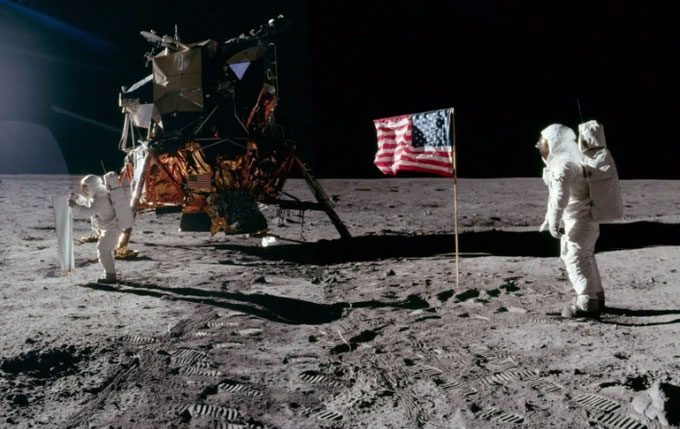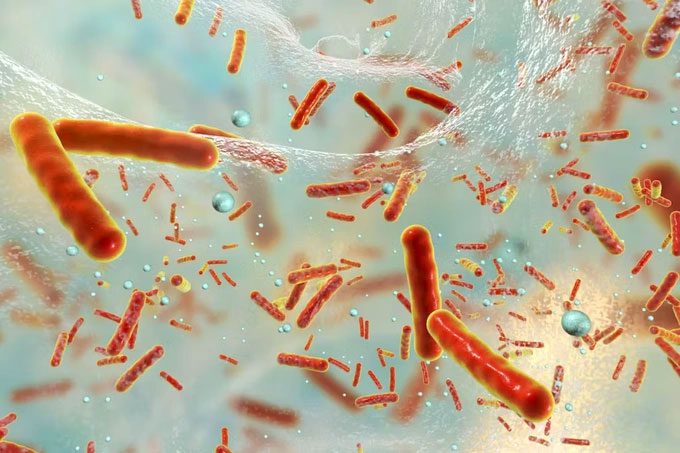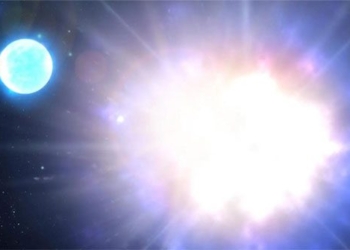A new analysis reveals that NASA officials overestimated the potential for extraterrestrial bacteria after humanity’s first landing on the Moon.
In a small desert town, dozens of people suddenly developed strange symptoms of a mysterious plague and subsequently died in agony. The infectious agent was later identified: it came from outer space. Ultimately, humanity was unable to find a cure, and the U.S. government had to work hard to contain the epidemic before it could devastate the world.

On July 20, 1969, NASA successfully accomplished humanity’s first landing on the Moon with the historic Apollo 11 mission. (Photo: NASA).
This is a familiar trope often seen in many films and novels. In fact, it is part of the novel The Andromeda Strain, published by author Michael Crichton in 1969.
Interestingly, the book was released just two months before humans first set foot on the Moon, causing widespread panic about what the Apollo 11 astronauts might bring back from outer space.
It is worth noting that at that time, no one was certain whether the Moon harbored microscopic life. If it did, the existence of bacteria was entirely possible.
NASA seemed to be concerned about unpredictable scenarios that could unfold. They established a quarantine facility in Houston, Texas, called the Moon Receiving Laboratory. The goal of this facility was to prevent any potential extraterrestrial bacteria from entering Earth.
When the Apollo 11 crew returned after their historic mission, they were immediately taken to a modern facility worth millions of dollars at the time, where they had to be isolated and undergo close health monitoring for three weeks.

Bacteria from space were a significant concern for humanity. (Photo: Getty).
On the surface, the quarantine protocol seemed like a reasonable precaution, especially in light of a series of conspiracy theories regarding the existence of extraterrestrial life. However, new research suggests that despite the substantial money and resources invested in the facility, NASA’s efforts to “protect the planet” were mostly for show.
This is emphasized by Dr. Dagomar Degroot, a historian at Georgetown University in the U.S., in his report. “The quarantine protocol appears successful, simply because it was unnecessary,” Degroot stated.
This expert pointed out several shortcomings in NASA’s quarantine protocol. One notable detail is that the Apollo spacecraft was not designed to prevent lunar contaminants from interacting with Earth’s environment.
Accordingly, when the spacecraft’s capsule fell into the Pacific Ocean during its return to Earth, the entire air inside the module was released into the atmosphere, as a critical step to prevent the crew from being poisoned by carbon dioxide.
“If this air was contaminated, it would likely have been released to Earth before any protective measures were implemented,” Degroot shared.
Fortunately, this did not happen. According to Degroot, NASA was quite certain that the risk of the Apollo 11 astronauts bringing back an extraterrestrial pathogen to Earth was extremely low.

U.S. President Richard Nixon welcomes the Apollo 11 astronauts back to Earth after their historic journey to the Moon. The astronauts were quarantined at a NASA quarantine facility for 21 days to ensure they did not bring back any lunar bacteria (Photo: NASA).
Nevertheless, NASA still implemented the extraterrestrial bacteria prevention facility to avoid causing public panic.
In a statement at that time, the agency reassured concerned citizens that their efforts “provided a laboratory capable of confronting things that had never existed before.”
Even if Apollo 11 had brought back bacteria from the Moon, it is hard to argue whether they could pose any risk to humans.
In reality, most microbial life on Earth is completely harmless to humans. In fact, some bacteria are essential for our health.
According to Dr. Degroot, extraterrestrial bacteria, if they existed, would find it very challenging to interact with Earth’s environment and our cells. To do so, they might require an evolutionary process lasting hundreds or even millions of years.





















































